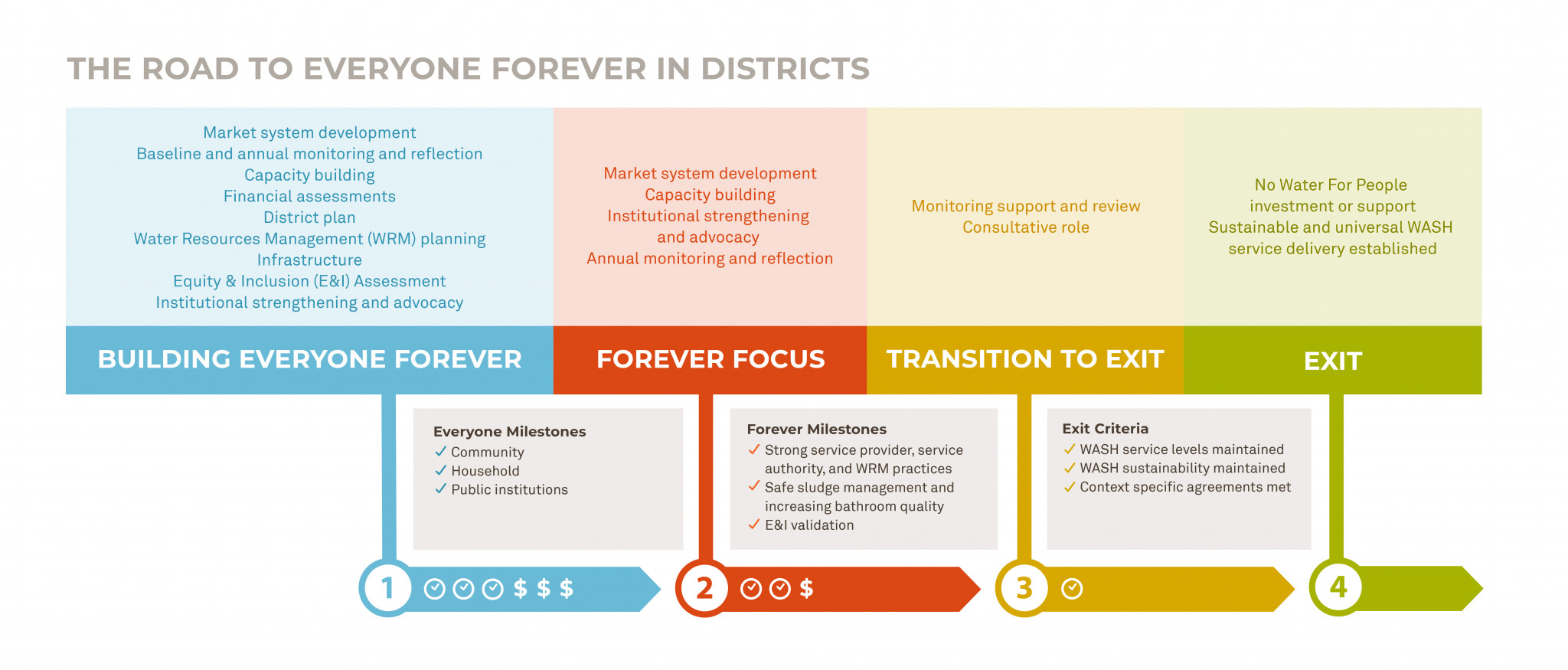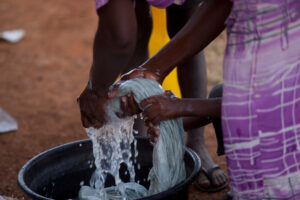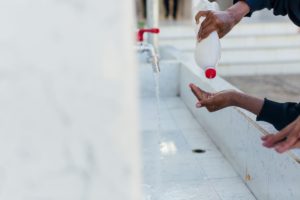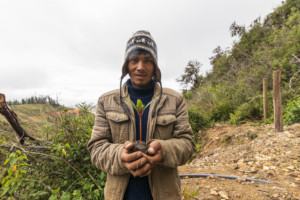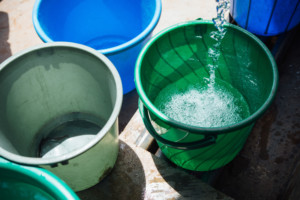Having achieved all three Everyone milestones for water, Water For People’s focus in this phase is to achieve sanitation milestones (as these typically require more time and less infrastructure investment) and continue strengthening the already-established actors and factors of service delivery and to equip service authorities to take ownership of the full WASH system. With less focus on infrastructure and decreased direct investment, Water For People has more capacity to focus on institutional strengthening and advocacy, continued capacity building, and annual monitoring and reflection. The goal is for service authorities have full responsibility to manage assets, conduct annual monitoring, lead investment planning, facilitate WRM planning, set sustainable tariffs, train service providers to keep water and sanitation systems running, develop a user feedback system to respond to issues, ensure intermediate or high levels of service, and develop sustainable supply chains for spare parts and sanitation products and services. This phase culminates in achieving the Forever milestones for water and sanitation (indicating that a district has established sustainable services), as demonstrated by the Sustainable Services Checklists. This means that services are sustainable, and systems can be operated and maintained to achieve high-quality services without involvement from Water For People or any other international NGO.
Before moving to the Transition to Exit phase, service levels must be maintained, and the Forever milestone for water must be reached. This means achieving an intermediate (yellow) or high (green) level of sustainability for each of the eight indicators on the annual Sustainable Water Services Checklist: service authority structure, finance, management, and monitoring; service provider structure, finance, and O&M; water resources management.
Additionally, the remaining two Everyone milestones for sanitation must be reached, along with the two Forever milestones for sanitation. This means at least basic (orange) level of service in at least 90% of households and sludge produced from 75% of families in the district is safely managed, as verified in the annual monitoring processes. For the Forever milestones, districts must achieve an intermediate (yellow) or high (green) level of sustainability for each of the three indicators on the Sustainable Sanitation Services Checklist: service authority structure and management, finance, and monitoring. They must also meet indicators for an increasing trend in demand, use, and availability of high-quality bathroom components, as assessed in annual monitoring surveys.
Finally, by the time a district reaches all Everyone milestones, we must confirm that even the hardest to reach populations have access to high-quality WASH services by conducting an Equity and Inclusion Validation. Districts must verify that any remaining households that lack access to WASH services a) are not from the most vulnerable or excluded population groups, OR b) it is the result of their own choice. We must confirm that households in the remaining 5% (for water) with an inadequate level of water service (red) or no improved water system (black) do not represent the most excluded or vulnerable population groups, or that they have chosen not to connect to an available improved water system. And that households in the remaining 10% (for sanitation) with an inadequate level of sanitation service (red) or no improved sanitation service (black) do not represent the most excluded or vulnerable population groups, or that they have chosen not to access improved sanitation services.

